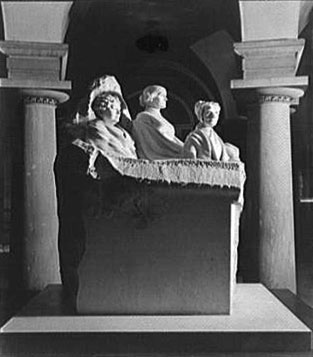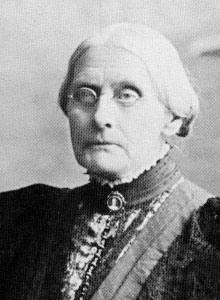
Source: Suffrage leaders Mott, Anthony, and Stanton in
U.S. Capitol basement, Americas Library

Source: Suffrage leaders Mott, Anthony, and Stanton in
U.S. Capitol basement, Americas Library
The purpose of the women's rights movement was to secure equal rights for women in America. The greatest concern for women was gaining the right to vote. The women's suffrage movement began in 1848 at the Seneca Falls Convention in New York. The leaders of the convention had previously been involved in the abolitionist movement and used their experience to organize petition drives and lobby Congress for the women's right to vote.

Source: Susan Brownwell Anthony older years,
Gobonobo, Wikimedia
was a leader in many of the reform movements. She gave speeches during the abolitionist movement and worked closely with Elizabeth Cady Stanton in the temperance movement and the women's suffrage movement. In her role as a suffragist, she co-founded a women's journal, The Revolution.
After the Civil War, the women of this movement split when women were not included in the 15th amendment extension of voting rights along with former slaves. Susan B. Anthony and were among those who refused to endorse the amendment because it did not extend the right to vote to women. Other suffragists, such as Lucy Stone, argued that women's right to vote would come once black males gained the right to vote.
Read about the two new organizations below that formed after the split in the women's rights movement:
National American Woman Suffrage Association (NAWSA) |
National Women's Party |
|
|
Eventually women were extended the right to vote with the passage of the 19th amendment in 1920.
The Women's Rights and Abolitionist Movements
There were similarities between the women's rights and abolitionist movements, but there were characteristics that set them apart. Determine whether each event below took place during the women's rights movement, the abolitionist movement, or both. Place each event in the correct location.